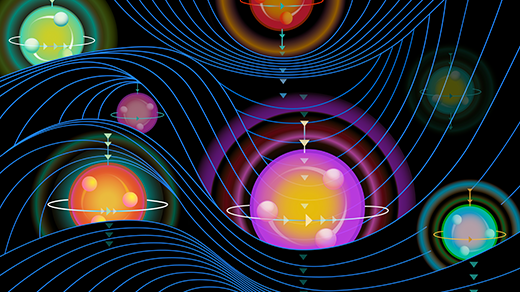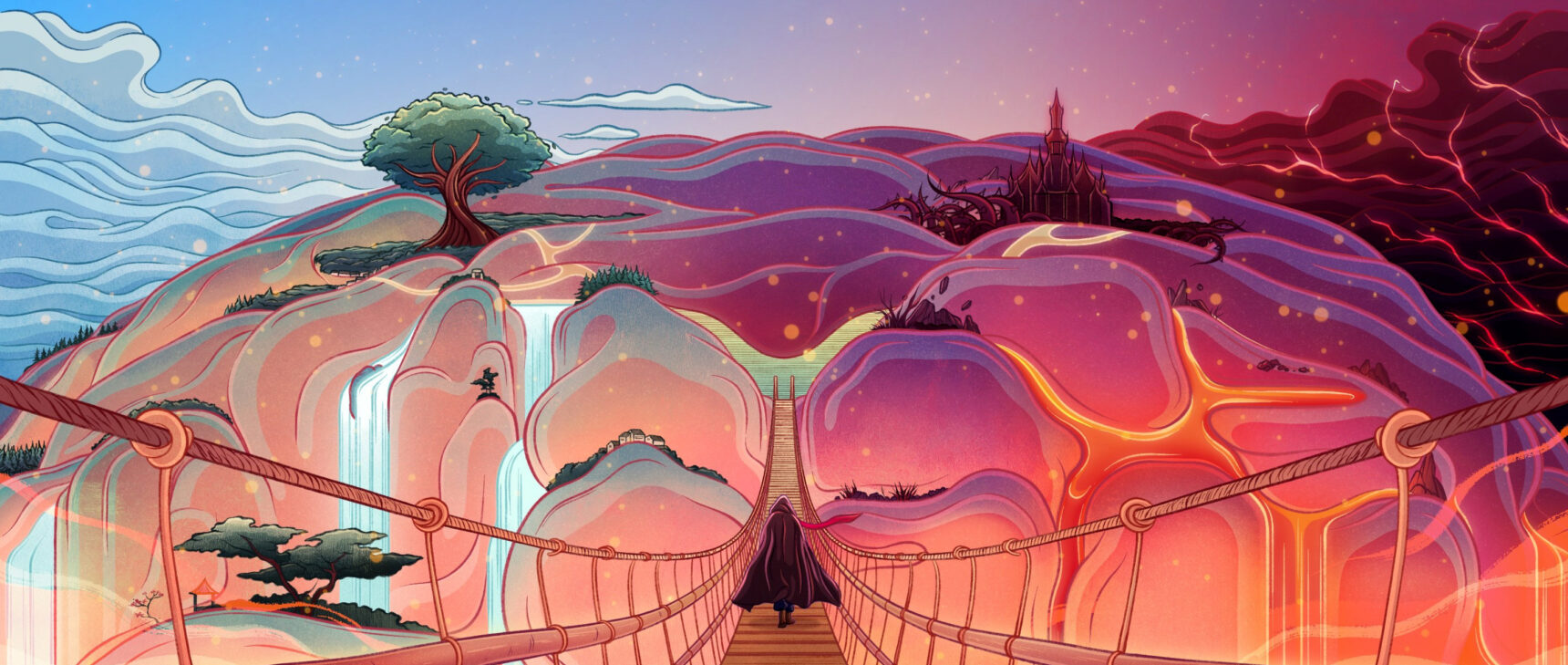A Black Hole’s Orbiting Ring of Light Could Encrypt Its Inner Secrets
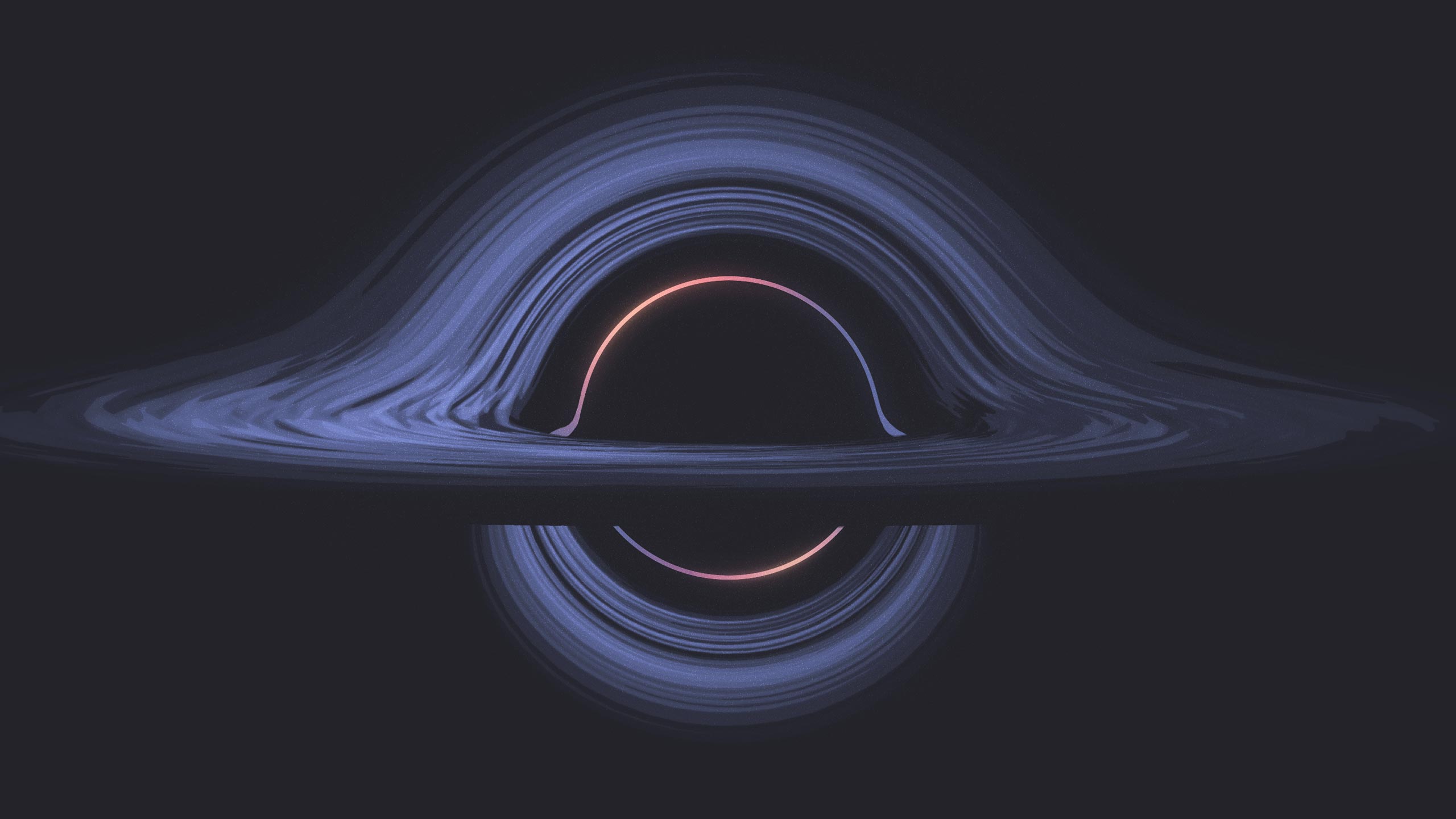
The photon ring, which glows orange in this visualization of light flowing around a black hole, contains a succession of images of the entire universe.
Olena Shmahalo for Quanta Magazine; Source: NASA’s Goddard Space Flight Center/Jeremy Schnittman
Introduction
When photons hurtle toward a black hole, most are sucked into its depths, never to return, or gently deflected away. A rare few, however, skirt the hole, making a series of abrupt U-turns. Some of these photons keep circling the black hole practically forever.
Described by astrophysicists as a “cosmic movie camera” and an “infinite light trap,” the resulting ring of orbiting photons is among the weirdest phenomena in nature. If you detect the photons, “you’re going to see every object in the universe infinitely many times,” said Sam Gralla, a physicist at the University of Arizona.
But unlike the iconic event horizon of a black hole — the boundary within which gravity is so strong that nothing can escape — the photon ring, which orbits the hole farther away, has never received much attention from theorists. It makes sense that researchers have been preoccupied with the event horizon, since it marks the edge of their knowledge about the universe. Throughout most of the cosmos, gravity tracks with curves in space and time as described by Albert Einstein’s general theory of relativity. But space-time warps so much inside black holes that general relativity breaks down there. Quantum gravity theorists seeking a truer, quantum description of gravity have therefore looked to the horizon for answers.
“I had taken the view that the event horizon was what we needed to understand,” said Andrew Strominger, a leading black hole and quantum gravity theorist at Harvard University. “And I thought of the photon ring as some sort of technical, complicated thing which didn’t have any deep significance.”
Now Strominger is making his own U-turn and trying to convince other theorists to join him. “We’re exploring, excitedly, the possibility that the photon ring is the thing that you have to understand to unlock the secrets of Kerr black holes,” he said, referring to the kind of spinning black holes created when stars die and gravitationally collapse. (The photon ring forms concurrently.)
In a paper posted online in May and recently accepted for publication in Classical Quantum Gravity, Strominger and his collaborators revealed that the photon ring around a spinning black hole has an unexpected kind of symmetry — a way that it can be transformed and still stay the same. The symmetry suggests that the ring may encode information about the hole’s quantum structure. “This symmetry smells like something to do with the central problem of understanding the quantum dynamics of black holes,” he said. The discovery has led researchers to debate whether the photon ring might even be part of a black hole’s “holographic dual” — a quantum system that’s exactly equivalent to the black hole itself, and which the black hole can be thought of as emerging out of like a hologram.
“It opens up a very interesting avenue for understanding the holography of these [black hole] geometries,” said Alex Maloney, a theorist at McGill University in Canada who was not involved in the research. “The new symmetry organizes the structure of black holes far from the event horizon, and I think that’s very exciting.”
Much more theoretical study is needed before researchers can say for sure whether, or in what way, the photon ring encodes a black hole’s inner contents. But at the very least, theorists say the new paper has detailed a precise test for any quantum system claiming to be the black hole’s holographic dual. “It’s a target for a holographic description,” said Juan Maldacena of the Institute for Advanced Study in Princeton, New Jersey, one of the original architects of holography.
Hiding in the Photon Ring
Part of the excitement about the photon ring is that, unlike the event horizon, it’s actually visible. In fact, Strominger’s U-turn toward these rings happened because of a photograph: the first-ever image of a black hole. When the Event Horizon Telescope (EHT) unveiled it in 2019, “I cried,” he said. “It’s amazingly beautiful.”
Elation soon spiraled into confusion. The black hole in the image had a thick ring of light around it, but physicists on the EHT team didn’t know whether this light was the product of the hole’s chaotic surrounding environment, or if it included the black hole’s photon ring. They went to Strominger and his theorist colleagues for help interpreting the image. Together, they browsed the huge databank of computer simulations that the EHT team was using to disentangle the physical processes that produce light around black holes. In these simulated images, they could see the thin, bright ring embedded in the larger, fuzzier orange doughnut of light.
“When you look at all the simulations, you can’t miss it,” said Shahar Hadar of the University of Haifa in Israel, who collaborated with Strominger and the EHT physicists on the research while at Harvard. The formation of the photon ring seems to be a “universal effect” that happens around all black holes, Hadar said.
Unlike the maelstrom of energetic colliding particles and fields that surrounds black holes, the theorists determined, the sharp line of the photon ring carries direct information about the black hole’s properties, including its mass and amount of spin. “It’s definitely the most beautiful and compelling way to really see the black hole,” said Strominger.
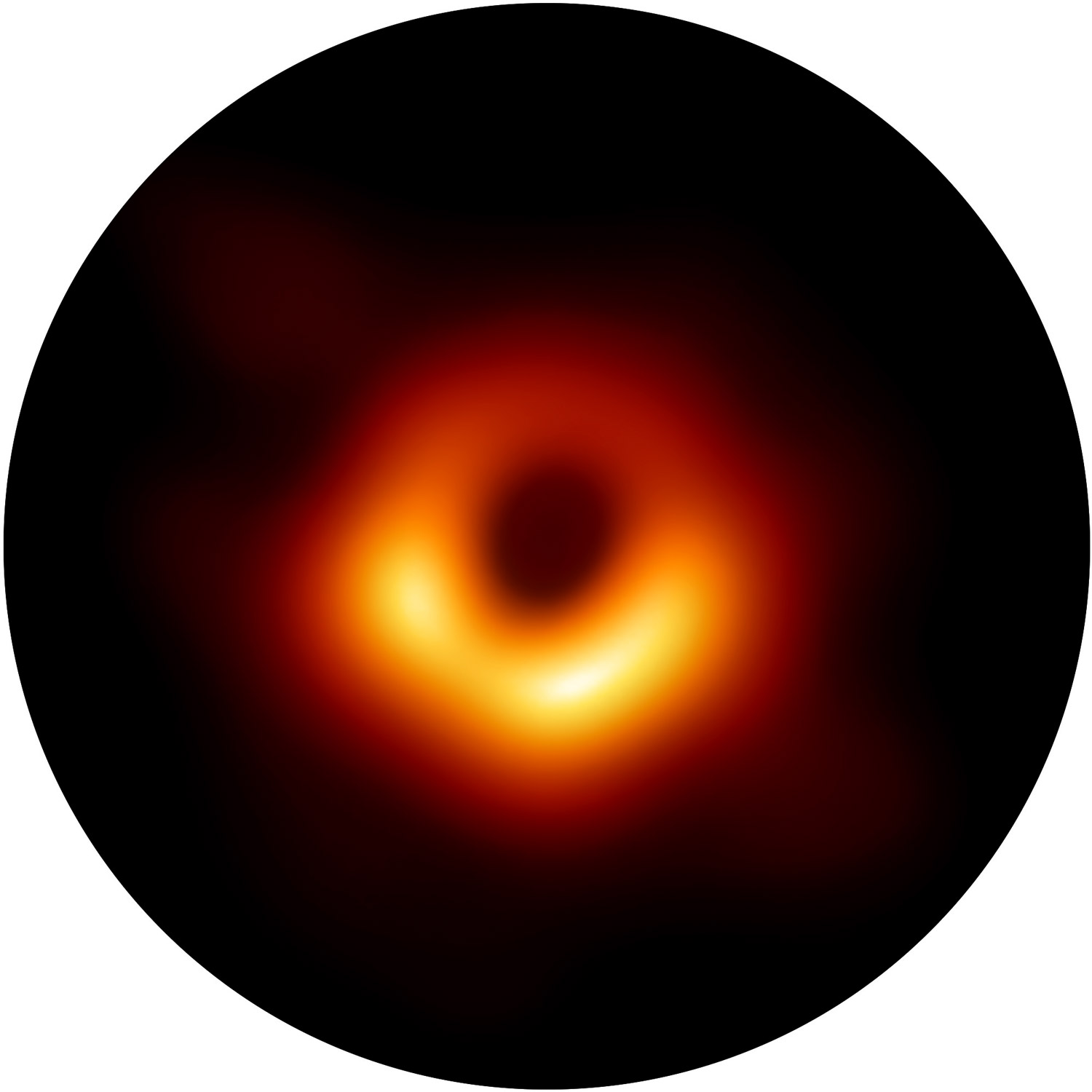
A global network of radio telescopes known as the Event Horizon Telescope released this first-ever photo of a black hole in 2019 — the supermassive one at the center of the nearby galaxy Messier 87.
The collaboration of astronomers, simulators and theorists found that the EHT’s actual photograph, which shows the black hole at the center of the nearby galaxy Messier 87, isn’t sharp enough to resolve the photon ring, although it isn’t far off. They argued in a 2020 paper that future, higher-resolution telescopes should easily see photon rings. (A new paper claims to have found the ring in the EHT’s 2019 image by applying an algorithm to remove layers from the original data, but the claim has been met with skepticism.)
Still, having stared at photon rings for so long in the simulations, Strominger and his colleagues began to wonder if their form hinted at an even deeper meaning.
A Surprising Symmetry
Photons that make a single U-turn around a black hole and then zip toward Earth would appear to us as a single ring of light. Photons that make two U-turns around the hole appear as a fainter, thinner subring within the first ring. And photons that make three U-turns appear as a subring within that subring, and so on, creating nested rings, each fainter and thinner than the last.
Light from the inner subrings has made more orbits and was therefore captured before the light from outer subrings, resulting in a series of time-delayed snapshots of the surrounding universe. “Together, the set of subrings are akin to the frames of a movie, capturing the history of the visible universe as seen from the black hole,” the collaboration wrote in the 2020 paper.
Strominger said that when he and his collaborators looked at the EHT pictures, “we were like: ‘Hey, there’s an infinite number of copies of the universe right there at that screen? Couldn’t that be where the holographic dual lives?’”
The researchers realized that the ring’s concentric structure is suggestive of a group of symmetries called conformal symmetry. A system that has conformal symmetry exhibits “scale invariance,” meaning it looks the same when you zoom in or out. In this case, each photon subring is an exact, demagnified copy of the previous subring. Moreover, a conformally symmetric system stays the same when translated forward or backward in time and when all spatial coordinates are inverted, shifted and then inverted again.
Strominger encountered conformal symmetry in the 1990s when it turned up in a special kind of five-dimensional black hole he was studying. By precisely understanding the details of this symmetry, he and Cumrun Vafa found a novel way to connect general relativity to the quantum world, at least inside these extreme kinds of black holes. They imagined cutting out the black hole and replacing its event horizon with what they called a holographic plate, a surface containing a quantum system of particles that respect conformal symmetry. They showed that the system’s properties correspond to properties of the black hole, as if the black hole is a higher-dimensional hologram of the conformal quantum system. In this way, they built a bridge between the description of a black hole according to general relativity and its quantum mechanical description.
In 1997, Maldacena extended this same holographic principle to an entire toy universe. He discovered a “universe in a bottle,” in which a conformally symmetric quantum system living on the bottle’s surface exactly mapped onto properties of space-time and gravity in the bottle’s interior. It was as if the interior was a “universe” that projected from its lower-dimensional surface like a hologram.
The discovery led many theorists to believe that the real universe is a hologram. The hitch is that Maldacena’s universe in a bottle differs from our own. It’s filled with a type of space-time that’s negatively curved, which gives it a surface-like outer boundary. Our universe is thought to be flat, and theorists have little idea what the holographic dual of flat space-time looks like. “We need to get back to the real world, while taking inspiration from what we learned from these hypothetical worlds,” Strominger said.
And so the group decided to study a realistic spinning black hole sitting in flat space-time, like those photographed by the Event Horizon Telescope. “The first questions to ask are: Where does the holographic dual live? And what are the symmetries?” said Hadar.
Searching for the Holographic Dual
Historically, conformal symmetry has proved a trustworthy guide in the search for quantum systems that holographically map onto systems with gravity. “Saying conformal symmetry and black hole in the same sentence to a quantum gravity theorist is like waving red meat in front of a dog,” said Strominger.
Starting from the description of spinning black holes in general relativity, called the Kerr metric, the group began to look for hints of conformal symmetry. They imagined hitting the black hole with a hammer to make it ring like a bell. These slowly fading vibrations are like the gravitational waves created when, say, two black holes collide. The black hole will ring with some resonant frequencies that depend on the shape of space-time (that is, on the Kerr metric) just as the ringing tones of a bell depend on its shape.
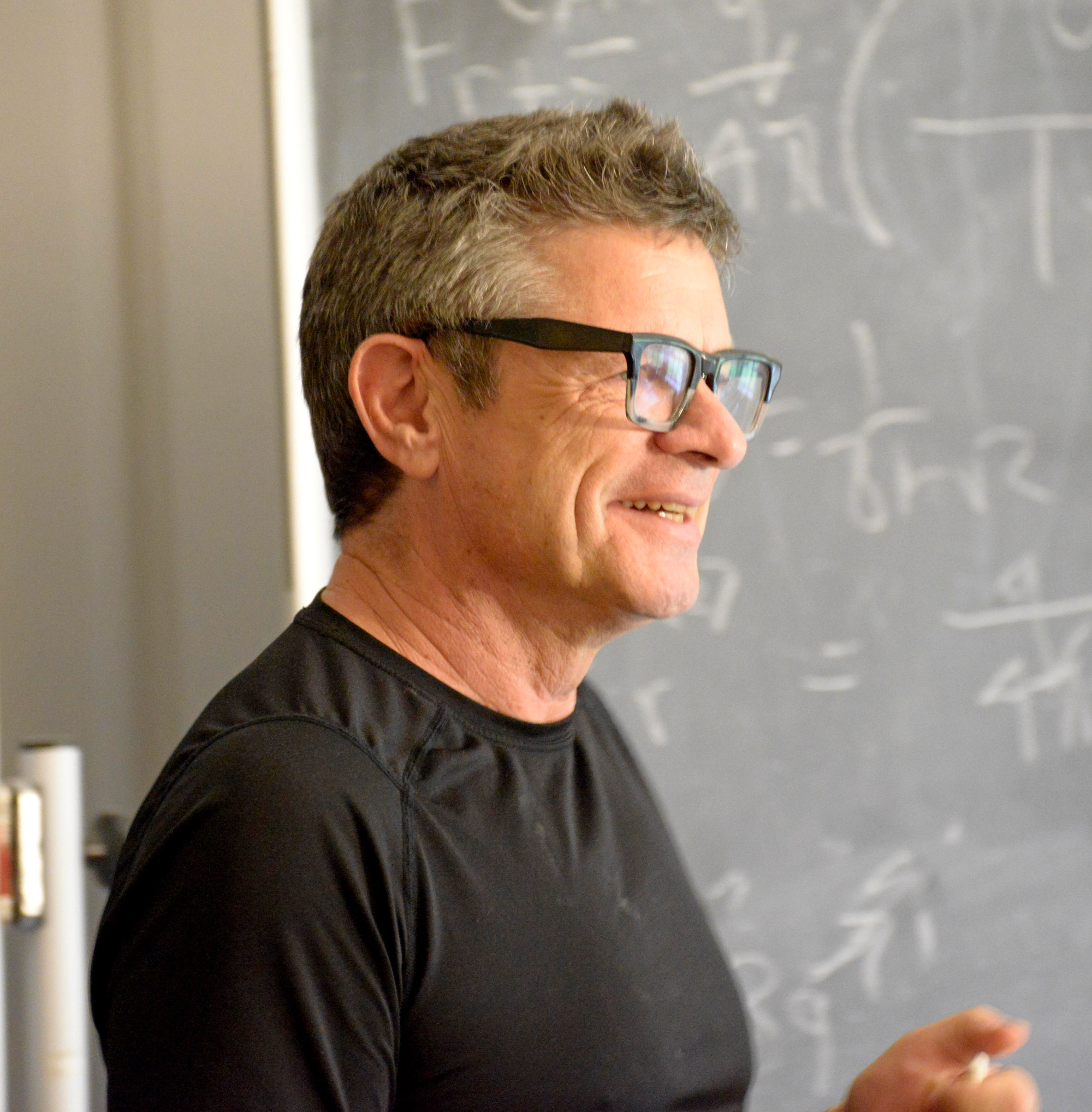
Andrew Strominger and colleagues recently discovered that a black hole’s photon ring has the kind of symmetry that often arises when an object — in this case, the black hole — can be described as a hologram.
Figuring out the exact pattern of vibrations is unfeasible because the Kerr metric is so complicated. So the team approximated the pattern by only considering high-frequency vibrations, which result from hitting the black hole very hard. They noticed a relationship between the pattern of waves at these high energies and the structure of the black hole’s photon rings. The pattern “turns out to be completely governed by the photon ring,” said Alex Lupsasca of the Vanderbilt Initiative for Gravity, Waves and Fluids in Tennessee, who co-authored the new paper with Strominger, Hadar and Daniel Kapec of Harvard.
A pivotal moment came in the summer of 2020 during the Covid-19 pandemic. Blackboards and benches were set up on the grass outside Harvard’s Jefferson physics lab, and the researchers could finally meet up in person. They worked out that, like the conformal symmetry which relates each photon ring to the next subring, the successive tones of a ringing black hole are related to each other by conformal symmetry. This relationship between the photon rings and the black hole vibrations could be a “harbinger” of holography, said Strominger.
Another clue that the photon ring may hold special significance comes from the counterintuitive way the ring relates to the black hole’s geometry. “It’s very, very weird,” Hadar said. “As you move along different points on the photon ring, you are actually probing different radii” or depths into the black hole.
These findings imply to Strominger that the photon ring, rather than the event horizon, is a “natural candidate” for part of the holographic plate of a spinning black hole.
If so, there may be a new way to picture what happens to information about objects that fall into black holes — a long-standing mystery known as the black hole information paradox. Recent calculations indicate that this information is somehow preserved by the universe as a black hole slowly evaporates. Strominger now speculates that the information might be stored in the holographic plate. “Perhaps information doesn’t really fall into the black hole, but it sort of stays in a cloud around outside the black hole, which probably extends to the photon ring,” he said. “But we don’t understand how it’s coded in there, or exactly how that works.”
A Call to Theorists
Strominger and company’s hunch that the holographic dual lives in or around the photon ring has been met with skepticism by some quantum gravity theorists, who see it as too bold an extrapolation from the ring’s conformal symmetry. “Where the holographic dual lives is a much deeper question than: What is the symmetry?” said Daniel Harlow, a quantum gravity and black hole theorist at the Massachusetts Institute of Technology. Although he is in favor of further research on the issue, Harlow stresses that a convincing holographic duality, in this case, must show how the properties of the photon ring, such as individual photons’ orbits and frequencies, mathematically map onto the fine-grained quantum details of the black hole.
Nevertheless, several experts said that the new research offers a useful needle that any proposed holographic dual must thread: The dual must be able to encode the unusual vibration pattern of a spinning black hole after it has been struck like a bell. “Demanding the quantum system that describes the black hole reproduces all of that complexity is an incredibly powerful constraint — and one that we’ve never tried to exploit before,” said Strominger. Eva Silverstein, a theoretical physicist at Stanford University, said, “It seems like a very nice piece of theoretical data for people to try to reproduce when attempting a holographic dual description.”
Maldacena agreed, saying, “One would like to understand how to incorporate this into a holographic dual. So it will probably stimulate some research in that direction.”
Maloney suspects that the newfound symmetry of the photon ring will spur interest among both theorists and observers. If hoped-for upgrades to the Event Horizon Telescope get funded, it could start to detect photon rings within a few years.
Future measurements of these rings won’t directly test holography, though — rather, the data will allow extreme tests of general relativity near black holes. It’s up to theorists to determine with pen-and-paper calculations if the structure of the infinite light traps around black holes can mathematically encrypt the secrets within.
